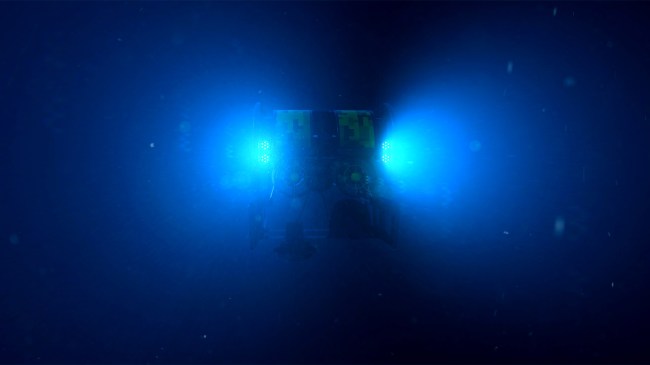
iStockphoto
For the first time ever, scientists have discovered “dark oxygen” being produced deep in a remote part of the Pacific Ocean in complete darkness without the help of marine plants or any other living organisms.
There is so much of planet Earth that humans have yet to explore and most of it is located deep in the ocean where our access, until relatively recently, has been very limited.
However, this particular discovery actually first occurred in 2013 when ocean scientist Andrew Sweetman observed some strange “nodules” on the ocean floor at a depth of about 13,000 feet around the Clarion-Clipperton Zone.
At that time, his first thought was that there was some kind of problem with his monitoring equipment.
“When we first got this data, we thought the sensors were faulty, because every study ever done in the deep sea has only seen oxygen being consumed rather than produced,” Sweetman, a professor and leader of the seafloor ecology and biogeochemistry research group at the Scottish Association for Marine Science (SAMS), said in a statement. We would come home and recalibrate the sensors, but, over the course of 10 years, these strange oxygen readings kept showing up.
“We decided to take a back-up method that worked differently to the optode sensors we were using and when both methods came back with the same result we knew we were onto something ground-breaking and unthought-of.”
Now, new evidence, published in the journal Nature Geoscience, shows that his equipment was working just fine.
It also revealed that everything we thought we knew about how oxygen is produced, and perhaps even how life on Earth began, must now be called into question.
“For aerobic life to begin on the planet, there had to be oxygen and our understanding has been that Earth’s oxygen supply began with photosynthetic organisms,” Sweetman said. “But we now know that there is oxygen produced in the deep sea, where there is no light. I think we therefore need to revisit questions like: where could aerobic life have begun?”
In the experiments, Prof. Sweetman and colleagues found nodules to be carrying a very high electric charge, which could lead to the splitting of seawater into hydrogen and oxygen in a process called seawater electrolysis. Only a voltage of 1.5 V is needed for seawater electrolysis to occur – the same voltage as a typical AA battery. The team analyzed multiple nodules and recorded readings of up to 0.95 volts on the surfaces of some, meaning that significant voltages can occur when the nodules are clustered together.
Prof. Sweetman now says that more investigation into ‘dark oxygen’ production is required during deep-sea mineral extraction baseline investigations as well as an assessment of how sediment smothering during mining may alter the process.
“The discovery of oxygen production by a non-photosynthetic process requires us to rethink how the evolution of complex life on the planet might have originated,” said SAMS Director Prof. Nicholas Owens. “The conventional view is that oxygen was first produced around three billion years ago by ancient microbes called cyanobacteria and there was a gradual development of complex life thereafter.
“The potential that there was an alternative source requires us to have a radical rethink.”
In May of 2023, another area around the Clarion-Clipperton Zone was discovered to be the home to more than 5,000 never-before-seen animal species with another 6,000 to 8,000 more unknown species possibly being present.